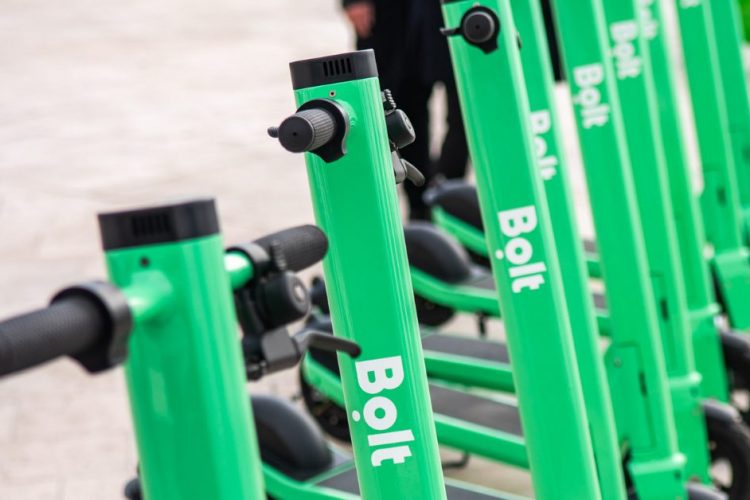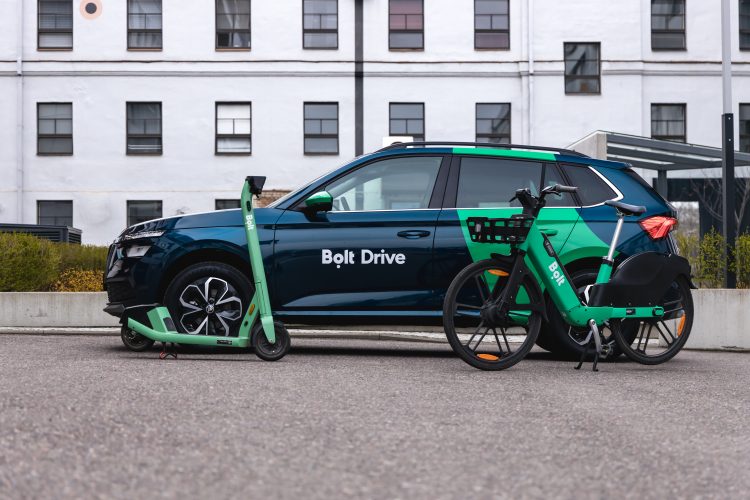How Bolt is taking the e-scooter market by storm
- Like
- Digg
- Del
- Tumblr
- VKontakte
- Buffer
- Love This
- Odnoklassniki
- Meneame
- Blogger
- Amazon
- Yahoo Mail
- Gmail
- AOL
- Newsvine
- HackerNews
- Evernote
- MySpace
- Mail.ru
- Viadeo
- Line
- Comments
- Yummly
- SMS
- Viber
- Telegram
- Subscribe
- Skype
- Facebook Messenger
- Kakao
- LiveJournal
- Yammer
- Edgar
- Fintel
- Mix
- Instapaper
- Copy Link
Posted: 25 June 2021 | Joshua Minchin - Intelligent Transport | No comments yet
Known primarily for its ride-hailing business, Bolt has now expanded its micromobility offering into more than 100 cities. Intelligent Transport’s Joshua Minchin sat down with Bolt’s Global Director of Rentals Products, Dmitri Pivovarov, to find out how it has achieved so much so quickly.


Credit: Bolt
With Bolt so successful in the ride-hailing market, why scooters?
Dmitri Pivovarov: Well, our vision for the company is a global one and we’re just getting started! Our vision is to provide the best opportunity for people to move around the city. There are multiple use cases when it comes to mobility. So, for some use cases, micromobility is a much better choice. If you need to travel two to five kilometres, why take a ride hailing taxi? Equally, micromobility might not be the best option if you are going grocery shopping.
So you think really most mobility businesses should be looking to diversify their offerings as much as possible?
DP: Exactly – and there is obviously a huge cross-pollination benefit to that. We see the same people completing different types of trips on our platform, with trips once made via taxi now completed via micromobility. Because they were short trips, it may have been better to use a scooter or an e-bike. I think it’s that diversity of options that is one of the biggest differentiating factors for us versus other platforms.
How have you conquered such a competitive market in such a short space of time?
DP: Basically, it comes down to our DNA. From the very beginning, we didn’t have access to massive amounts of capital. If you look at our competition, they are able to raise massive amounts of funding. Some of our competitors have raised nearly a billion pounds in funding, yet we must have less than a hundred million in micromobility and we achieved the same results. It’s all about efficiency.
Our nimble approach allows us to, first of all, be frugal on one side, but in addition we can use capital much more efficiently and we can expand much quicker. When we come to the market, we are usually the most affordable player and we have the same coverage. When users choose ride-hailing or micromobility platforms, they care about how quickly they can order a taxi or find a scooter and how affordable it is. Because we have much lower cost structures in terms of operations, hardware and product, we can make the service much more affordable at the same, or even better quality. So naturally it’s easy for us to compete.


Bolt has diversified from a ride-hailing business into the micromobility market
Why does Bolt choose to make its own hardware?
DP: One of the reasons is not having to pay for the profit margins of suppliers – a saving we can then pass on to our customers. Our hardware cost is now a lot cheaper than if you buy off the shelf. But it’s not the only reason, there are two other reasons why we decided to do it.
One is the speed of iteration – we can get feedback much faster. We can talk to our team in China, they change something and improve the scooter. You can see that with the amount of models we roll out – so far we’ve been turning out one model per year – no one else in the market is doing that.
One of the other most important reasons is because we can make the safest scooters this way. When our competition, again, is buying off-the-shelf scooters, they have very little impact on how they can change the scooter.
But we can make choices no one else is making. For example, we have pneumatic tires. Most of the market has solid tires because it’s just more cost efficient. But we went for the pneumatic tires because they are much safer. They have much better grip and traction, especially on wet surfaces. They have shorter braking distances and because of the better grip, the ride itself is not so bumpy.
How do you ensure vulnerable road users are kept safe?
DP: We use ambient noise, so when the scooter is moving it can produce a kind of white noise, which alerts everyone that there’s a moving vehicle.
In addition, we found after research that one third of all accidents happen on the very first ride – it’s very disproportional. The first three rides account for more than half of accidents. So, that’s why we developed the beginner mode. If you’re a new user, we restrict the speed for you, we restrict the acceleration profile, and it’s much, much safer for you to start. After five rides, we enable the regular mode.
We’re always trying to approach from an angle of ‘What’s the real problem we’re solving?’ There are some marginal improvements you can make with a safety school, for example. Some people will read it, some may skip through it, but in the end it’s those forceful restrictions that make a change.
Additionally, one thing no one really talks about is that the biggest barrier to safety is infrastructure. Eighty plus per cent of lethal accidents happen because there’s impact with a vehicle. The same goes for pedestrians. If a person riding on a scooter harms pedestrians, there is an impact, they get hurt.
The biggest things cities can do actually, is to create infrastructure. This is why when we talk to cities, we are suggesting quite a different model to them than tendering. When we have tenders, as we’ve seen in London, for example, the city doesn’t gain anything from it, and users, citizens, do not gain anything either. What we are suggesting is that it’s better to have an open market and every operator has to pay a per scooter city fee. That revenue stream can then be used by the city to improve infrastructure.
Do you think e-scooters have built a bad reputation among the public recently?
DP: It really depends on the audience. Some people use them daily, so they’re definitely happy. Of course, there are non-users who are affected by this in negative ways, and they’re not so happy about it. As you know there’s a parking issue, which cities are trying to solve by running tenders. But again, if you select three operators, instead of 10, it doesn’t help you to solve the parking issue because cities are not selecting three car models that are allowed in the city. Anyone can drive a car.
Exactly the same approach used for cars should be used for scooters. Instead of just selecting operators, cities should introduce parking fees for scooters, and use that revenue stream to build parking spaces for scooters. Then it solves the whole problem of parking.
How do you decide which cities to enter? Do you look for a gap in the market?
Well, we don’t look for a gap because we’ve seen that in any market we can become the best player in terms of affordability. We’ve seen this in the Nordic countries, which was the most expensive market in the world last year. It was more than one euro to unlock, and more than 20 to 30 cents per minute. We entered, made a zero unlock fee, and priced at 20 cents per minute. Everyone else had to follow, so we cause this positive effect when we enter markets.
The biggest bottlenecks right now are regulators. We cannot enter countries that do not allow scooters. Some are running selected tenders, but otherwise we definitely want to cover as many cities as possible because people need to move in every single city in Europe.
Dmitri Pivovarov


Related topics
Mobility Services, Passenger Accessibility, Passenger Experience
Related modes
Bikes & Scooters, e-scooters
Related cities
Europe
Related organisations
Bolt
Related people
Dmitri Pivovarov








